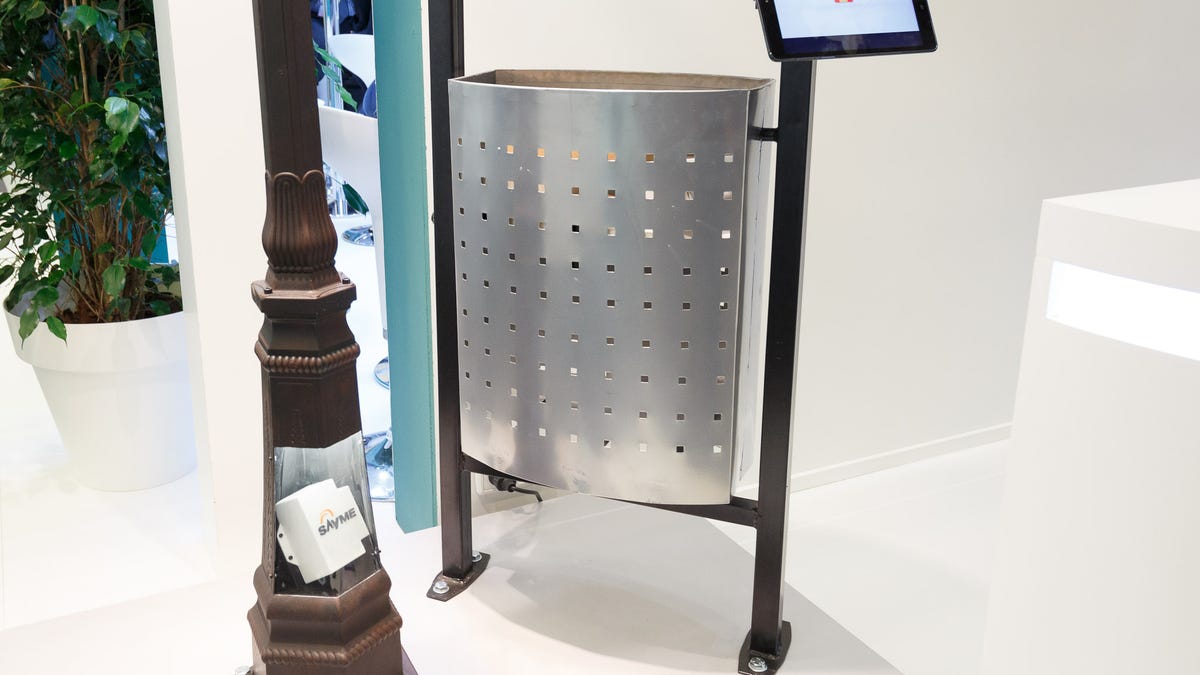Don't laugh: This networked trash can actually is a good idea
Some ideas for the Internet of Things are a bit silly. But new network technology could keep parks tidier, beer fresher and hydrants ready for firefighters.
OK, enough with the Internet-connected refrigerator already.
That appliance is becoming a reality, what with Samsung and its smart fridge. But it also leaves a lot to be desired as an example of the Internet of Things, the idea that network connections will spread to anything with a power cord and even to a lot of things without one. The big problem: convincing you that you might actually want one. It's no coincidence the Internet-connected fridge has been a tech industry joke for years.
But Sigfox, a French company headquartered near Toulouse, offers a low-priced, battery-preserving network that enables Internet of Things ideas that could hold more appeal.
Like a networked trash can.
OK, stop snickering -- it actually could be useful. Not so much for your house, but in cities that need to know which cans need to be emptied pronto. A monitor keeps track of how full a trash can is and sends that status over Sigfox's network. When the bin is getting full, the city knows where to send the collectors. Barcelona is installing about 200.
The Internet of Things promises a lot more than an end to overflowing garbage at the playground. There are plenty of security and technology challenges, to be sure, but hundreds of companies are working to add computing smarts to your everyday life. Your home stereo could pause the music when mom calls, your car could tell you if you left the house without your phone and your door could unlock for an authorized deliveryman and package.
Some of that technology will use Wi-Fi networks. Sigfox's network takes a different approach designed for devices that don't have enough battery power to use Wi-Fi for long. Its network sends only tiny tidbits of data, but that amount of data still is useful for plenty of jobs. In addition to carrying trash can status updates, it reports, for instance, latitude and longitude coordinates to keep track of scientists working on Antarctica.
Sigfox is vying with competitors like Ingenu's Machine Network, MultiTech's device network and Actility's ThingPark. They'll all be competing with the 5G network technology coming to your phone and any number of other gadgets. It's still early days for the Internet of Things, so expect some hurdles as the technology matures.
At the Mobile World Congress tech show in Barcelona this week, Sigfox is showing off a variety of ways its tech can be employed.
Say you're having a pint with your pals at the bar. Brewer Estrella Damm is using a Sigfox network to report when beer is being stored at the wrong temperature, according to Thomas Nicholls, Sigfox's executive vice president of communication. The company sends a technician to fix problems a bar manager might not even have noticed.
Other new examples at Mobile World Congress include a beehive that reports when it's full of honey, a wind-speed gauge for kite surfers, a fire hydrant valve that tells firefighters if there's enough water pressure, and a home security system that uses Sigfox's network to protect against jamming of its main network.
Sigfox's network is in 14 countries now, mostly in Europe, with Germany the latest arrival. The company offers service in the 10 largest US cities, should hit the 100 largest by the end of the year, and should reach "most of the country by the end of 2017," Nicholls said.
At the show here in Barcelona, Sigfox also announced a notable new business partner. Otio will use the network for a million of its audio-detection devices, which listen for the distinctive sounds of smoke detectors and burglar alarms and send you a text-message alert.


